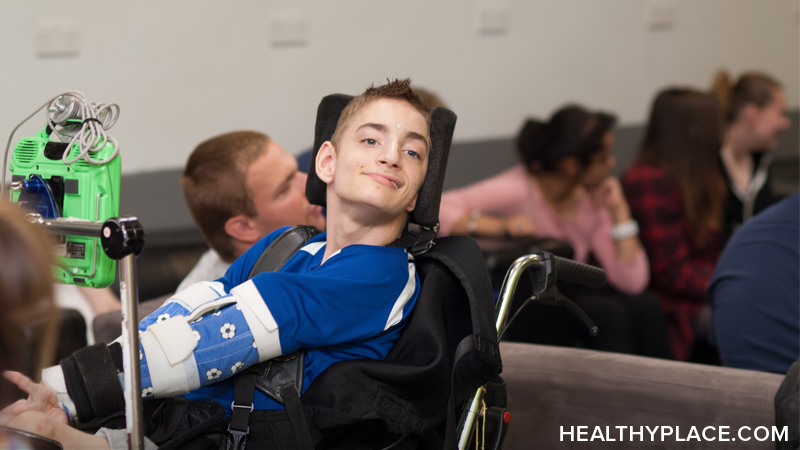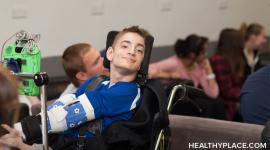What are Motor Disorders? Signs, Symptoms, Causes, Treatments

Tic disorders appear in the fifth edition of the Diagnostic and Statistical Manual of Mental Disorders (DSM-5) as motor disorders listed in the neurodevelopmental disorder category. The DSM-5 replaces the term transient tic disorder with provisional tic disorder, but made few other significant changes.
The term, tics, refers to sudden movements, twitches, or sounds that people perform repetitively. People with tic or motor disorders cannot refrain from doing these things or uttering the sounds. An individual with a motor tic disorder may blink repeatedly. Someone with a vocal tic might unwillingly make a grunting sound over and over.
The DSM-5 Motor Disorders
The various motor disorders differ in relation to the type of tic present and the duration of symptoms. People with tic disorders can have motor, vocal, or a combination of the two types of tics. The seven motor disorders listed in the DSM-5 include:
- Developmental Coordination Disorder
- Stereotypic Movement Disorder
- Tourette Syndrome (also called Tourette's disorder)
- Persistent (chronic) vocal or motor tic disorder
- Provisional tic disorder
- Other Specified Tic Disorder
- Unspecified Tic Disorder
Symptoms, Causes, and Treatment of Motor Disorders
Knowing the symptoms, causes, and treatment of motor disorders, as well as their impact and prognosis, can assist with early identification and help you obtain effective treatment. Each disorder has its own characteristics and issues.
Developmental Coordination Disorder
Developmental coordination disorder (DCD) begins in childhood and leads to clumsiness and impaired coordination. Children with the disorder have impaired motor coordination compared to others in their age group. Symptoms include:
- Clumsiness
- Problems suckling and swallowing during the first 12 months of life
- Delayed sitting, crawling, and walking
- Difficulties with gross motor skills (i.e. jumping, hopping, and standing on one foot)
- Difficulties with fine motor skills (i.e. writing, cutting with scissors, tying shoes)
Experts have many theories, but still don't have a clear idea about what causes DCD. Children with DCD frequently have other difficulties in association with their motor problems, making it unlikely that a single factor causes the coordination issues in this group of children. Some research suggests a link between the cerebellum in the brain and DCD, since this brain structure has a critical role in developing movement control and other aspects of movement.
Treatment of developmental coordination disorder involves perceptual motor training and physical education. Children with DCD may overcome their writing issues by taking notes using a computer. Prognosis depends on the severity of the DCD. It typically does not worsen over time, but continues into adulthood.
Stereotypic Movement Disorder
The term, stereotypic movement disorder, refers to a movement or motor disorder characterized by repetitive movements, such as head banging or body rocking, for over four weeks. The movements tend to increase or intensify with elevated levels of stress or boredom.
These purposeless movements impede normal daily activity and could cause physical harm to the mover or those around him. Symptoms include repetitive and excessive:
- Head banging (against a wall or other solid form)
- Rocking back and forth
- Shaking or waving hands for no reason
- Nail biting
- Biting of self
- Hitting self
More boys than girls present with stereotypic movement disorder in childhood, however it can develop in adults too. Experts don't know the cause of this disorder when it occurs without the presence of other associated conditions. Abuse of stimulants like cocaine or amphetamines can cause a rapid onset, but short-lived period of stereotypic movement disorder. Head injuries may cause these stereotypical movements as well.
Treatment of motor disorders depends on the possible causes, individual's age, and symptoms. Behavioral modification techniques and psychotherapy represent the most effective treatments. The prognosis for individuals with stereotypic movement disorder depends on the underlying cause, if identifiable. If drug-induced, the condition typically resolves on its own after the drug leaves the body. Stereotypic movements resulting from a head injury may remain indefinitely.
Tourette's Disorder
Tourette's disorder, also called Tourette syndrome, is a tic disorder that starts in childhood. It involves involuntary tics, which include purposeless movements or undesired sounds. Individuals with tic disorders, like Tourette syndrome, may blink their eyes excessively, constantly shrug shoulders up and down, or jerk the head. They may also grunt repetitively or randomly blurt out offensive words and phrases. People with this disorder can't control their movements or sounds. Signs typically appear between the ages of 2 and 12 years. Boys develop Tourette syndrome four times as often as girls. Symptoms of Tourette's disorder include:
- Simple tics – sudden, brief, and repetitive small movements
- Complex tics – coordinated strings of larger, more complex movements
- Vocal tics – short, random sounds or words
Motor tics usually appear before vocal tics, but not always. Symptoms range anywhere from very mild to severe. Severe symptoms interfere with communication and quality of life. As with many neurodevelopmental disorders, experts don't know the exact cause of Tourette syndrome. Many researchers believe that both genetics and the environment play a role in its development. Some evidence suggests that abnormal levels of certain brain chemicals may contribute to the development of the disorder.
Since there's no cure for Tourette's disorder, treatment focuses on controlling the tics that interfere with everyday life. Some success has been found with psychotherapy, behavior modification therapy, and deep brain stimulation. No psychiatric medication helps everyone with Tourette syndrome, but some are prescribed to reduce symptoms of adjunct or related conditions, such as ADHD or obsessive-compulsive disorder. Possible medications used to minimize symptoms include: antidepressants, stimulants (i.e. Ritalan and Adderall), or dopamine blockers.
Tics typically lessen in intensity and frequency with age. It's important for those dealing with tic disorders to reach out to others to help them cope and give support.
Persistent (chronic) Vocal or Motor Tic Disorder
Chronic vocal or motor tic disorder involves brief, repetitive movements or unwanted vocal sounds, but not both. It's more common than Tourette syndrome, but less common than provisional tic disorder. Researchers do not know the cause of this disorder, but some theorize that chronic tics are forms of Tourette syndrome. Symptoms of chronic motor or vocal tic disorder include chronic and excessive:
- Eye blinking
- Facial grimaces
- Jerking of the arms, legs, or head
- Vocal sounds (grunting, throat clearing)
People with chronic motor disorder report that they feel a sense of relief when making these movements or sounds. They can refrain from carrying them out for a brief period, but not for long. When asked, people describe their movements or sounds as in response to an intense inner urge. The tics often continue while the person sleeps and may worsen with fatigue, stress, frustration, or excitement.
Treatments focus on reducing symptoms, since there is no known cure. Doctors only prescribe psychotherapy and medications when the tics significantly impact daily activities and quality of life. Drugs used to treat symptoms of tic disorders have negative side effects that must be weighted against any benefit. Children who develop chronic motor disorder before the age of 8 usually find that the symptoms stop once they reach puberty. But when older children or adults develop the disorder, the symptoms may last a lifetime.
Provisional Tic Disorder
Formerly called transient tic disorder, provisional tic disorder involves the presence of one or more motor tics or vocal tics that occur several times a day. This is a temporary condition and people with this disorder make one or many quick, repetitive movements or noises. Provisional tic disorder develops before the age of 18. Symptoms include:
- Repetitive, non-rhythmic movements
- Intense urge to make the movement
- Quick movements that include:
- Eye blinking
- Fist clenching
- Toe curling
- Nostril flaring
- Facial grimaces
- Jerking of arms or legs
- Eyebrow raising
- Shoulder shrugging
- Other brief, purposeless movements
- Vocal tics may include:
- Grunting
- Moaning
- Sniffing
- Throat clearing
- Clicking
- Hissing
- Snorting
Health care experts recommend that family members avoid calling attention to the tics because this attention may increase stress levels, causing tics to worsen. These simple childhood tics typically disappear over a few months.
Other Specified Tic Disorder and Unspecified Tic Disorder
Other specified tic disorders are those in which the tics don't meet the diagnostic standards for a particular, specific tic disorder. This diagnosis might involve tics that last less than a month, or tics that begin and persist after the age of 18. The clinician will list the reason the tics don't meet this criteria. An unspecified tic disorder is the same thing; except the clinician does not list the reason the tics don't meet criteria for a specific diagnosis.
Coping with Motor Disorders
Motor disorders are most often conditions that occur in childhood and they can cause great shame and embarrassment in the individuals who have them. Dwelling on the tics and exaggerating their appearance to others can cause extreme anxiety and stress, actually making the tics worse. People with motor disorders or tic disorders should educate themselves about their condition so they can inform others about it. Joining a support group with others dealing with motor disorders helps too. Motor disorders are not something you can control, so there's no reason to be embarrassed. Avoiding stressful situations and getting plenty of rest can reduce symptoms of motor disorders too.
|
|
APA Reference
Gluck, S.
(2014, May 21). What are Motor Disorders? Signs, Symptoms, Causes, Treatments, HealthyPlace. Retrieved
on 2025, December 7 from https://www.healthyplace.com/neurodevelopmental-disorders/motor-disorders/what-are-motor-disorders-signs-symptoms-causes-treatments


